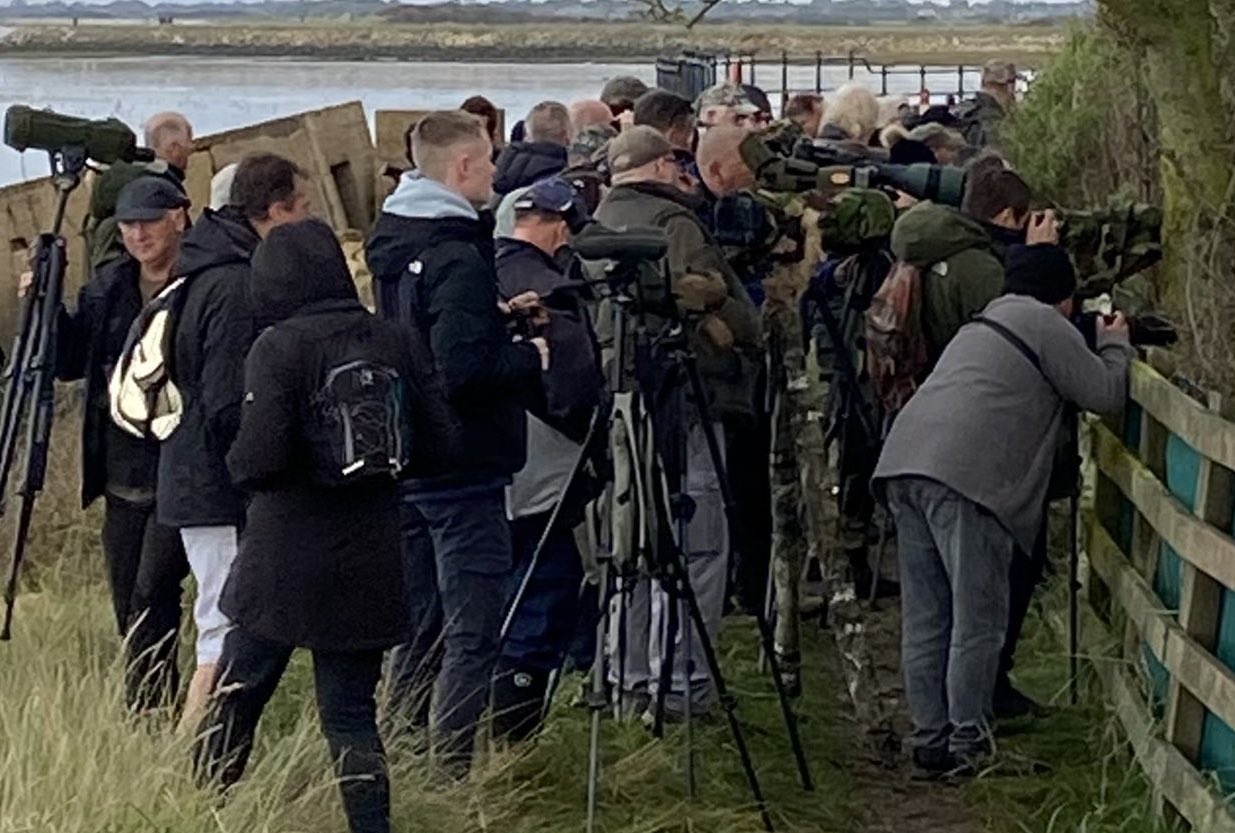Rarity and COVID
The east coast of Britain, plus a rash of Scottish Isles, is/are playing host to a stellar cast of rare vagrants - Masked Shrike, Tennessee Warbler, Pallas’s Grasshopper Warbler, Siberian Thrush, White’s Thrush, Eye-browed Thrush, Two-barred Greenish Warbler - I could go on... plus a mouthwatering back-up courtesy of multiple Red-flanked Bluetails, Radde’s Warblers and more Yellow-browed Warblers than it is possible to accurately count. For many birders the knee-jerk reaction is to head straight to the hot-spots where the rarity - and the action - is taking place. And who can blame them.
But, things are different now. Joining the ‘to be expected’ moral conundrums that usually accompany such a birding scrum (trespass, toggers and carbon foot-print) there is a new concern in town, that of the COVID-19 virus. A rare bird = a birding crowd. When something as modest as a scarce migrant can gather 20-30 birders within minutes, what chance do we stand of conforming to health guidelines? There is also the differing detail within those guidelines - such as how many people are allowed to gather at the Tennessee Warbler as opposed to the Masked Shrike? What about the Red-flanked Bluetail at Spurn?
According to current information, the Tennessee Warbler can welcome six birders from no more than two households who can stand 2m from each other. The Masked Shrike is at Hartlepool, a region under ‘special measures‘ where all but essential travel is banned. At Spurn, no more than six people should stand together, whilst maintaining social distancing. Establishments such as bird observatories and reserves, really have had their work cut out. Apart from the problem of how to manage visitors (whether staying guests or day-trippers, to the opening of centres or hides) there is the spectre of a rare bird turning up that WILL draw a crowd. And, without wishing to suggest that everybody in such a crowd would not be conscious of the social responsibilities that go with safe COVID-19 behaviour, if you are willing to put yourself into a birding scrum for the sake of seeing a rare bird, then the chances are that your compass will be a little bit off.
But then I need to take a step back. What if I were at Dungeness and somebody had just found one of those rarities mentioned above. Would I refuse to walk a few hundred metres to see it? No, of course I wouldn’t. I’d toddle along and have a look. But what if I arrived and the bird wasn’t on show. And half-an-hour then passed by. The crowd would have built up way past six, well beyond 20-30. What then? Abandon? Miss out altogether? It isn’t as straightforward as it might seem.
There will be plenty of birders out there finding rare birds and not releasing the news. Not out of malice or old-fashioned suppression, but out of not wanting to risk a large gathering of birders. Such gatherings run a high risk of becoming rat-runs for the spread of COVID. Not just between birders but also others who will subsequently come into their orbit. And many in such rarity gatherings then travel on to the next one, and the next...
The image above was taken this morning at Spurn, of a crowd of birders appreciating a Red-flanked Bluetail. It was taken by John Sadler (@jpsadler) who has kindly given me permission to use it. I would also like to point out that I am not accusing any recognisable birder in the image of poor behaviour as a frozen moment in time does not tell the whole story. But what can be gathered is that social distancing seems to be a little lax, there doesn't seem to be a face mask on show and there are certainly more than six people together. It is when confronted by such scenes that the finders of birds, or the custodians of the land on which the rarity has appeared, need to think long and hard about whether the news needs to be broadcast at all. Spurn Bird Observatory, on seeing this image, did tweet out "we implore birders on site - please behave sensibly, and please think how your actions may reflect on the hard work of those at the Observatory".
Do we need to take a good, long, hard look at our birding-selves? Is there a need to forgo twitching at this moment in time? Is it best to not announce rarities or scarce-migrants if we are lucky enough to find them? They are, after all, just birds.



Comments
Me it’s actually having a beneficial effect here in Norfolk as I am thinking first ‘how many people will there be’ and if the answers more than a couple I go elsewhere and it’s really rekindling an interest in local patch birding. A few YBW, Redstarts and Pied Flys self found with no one else around is a good feeling.